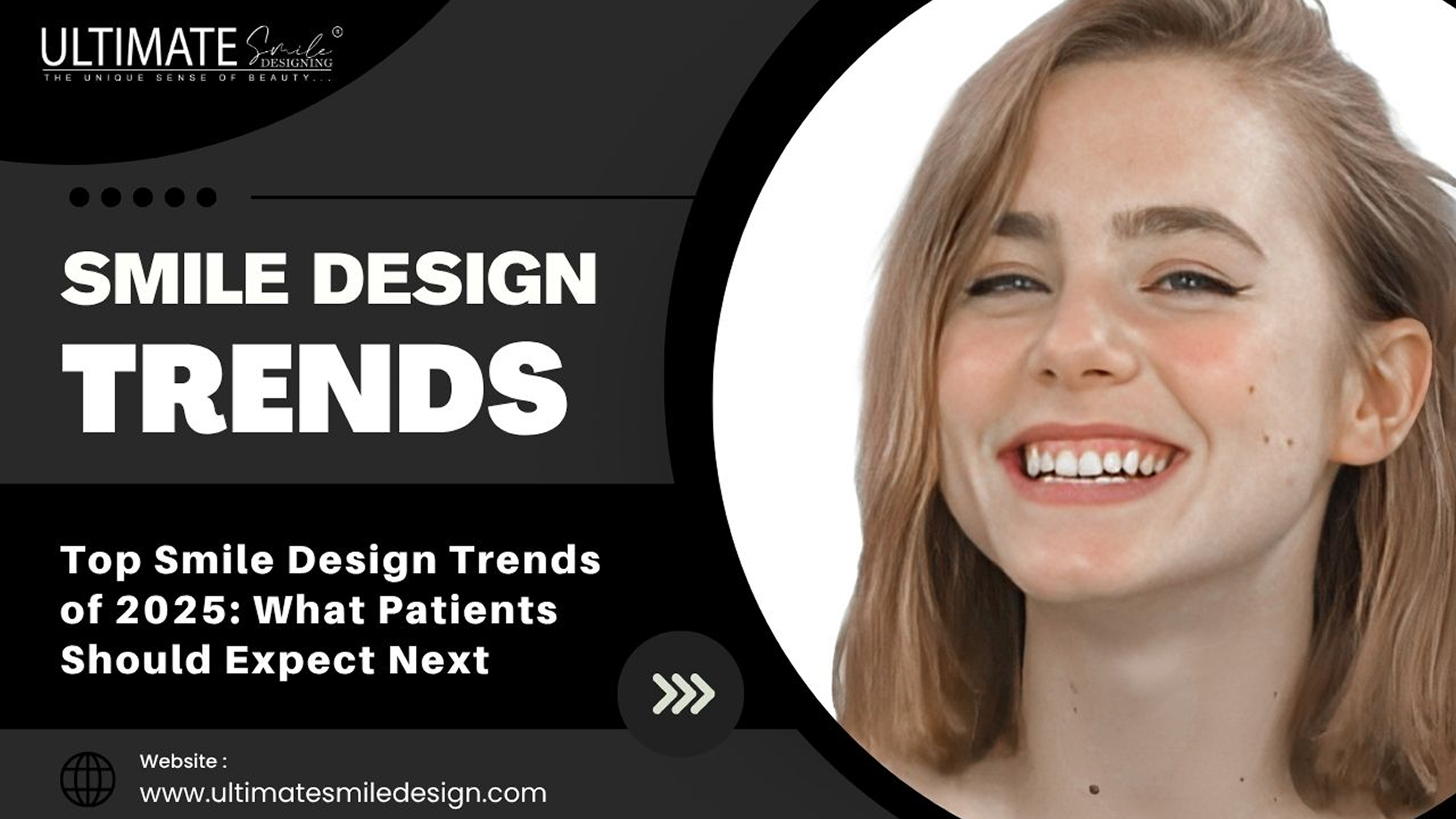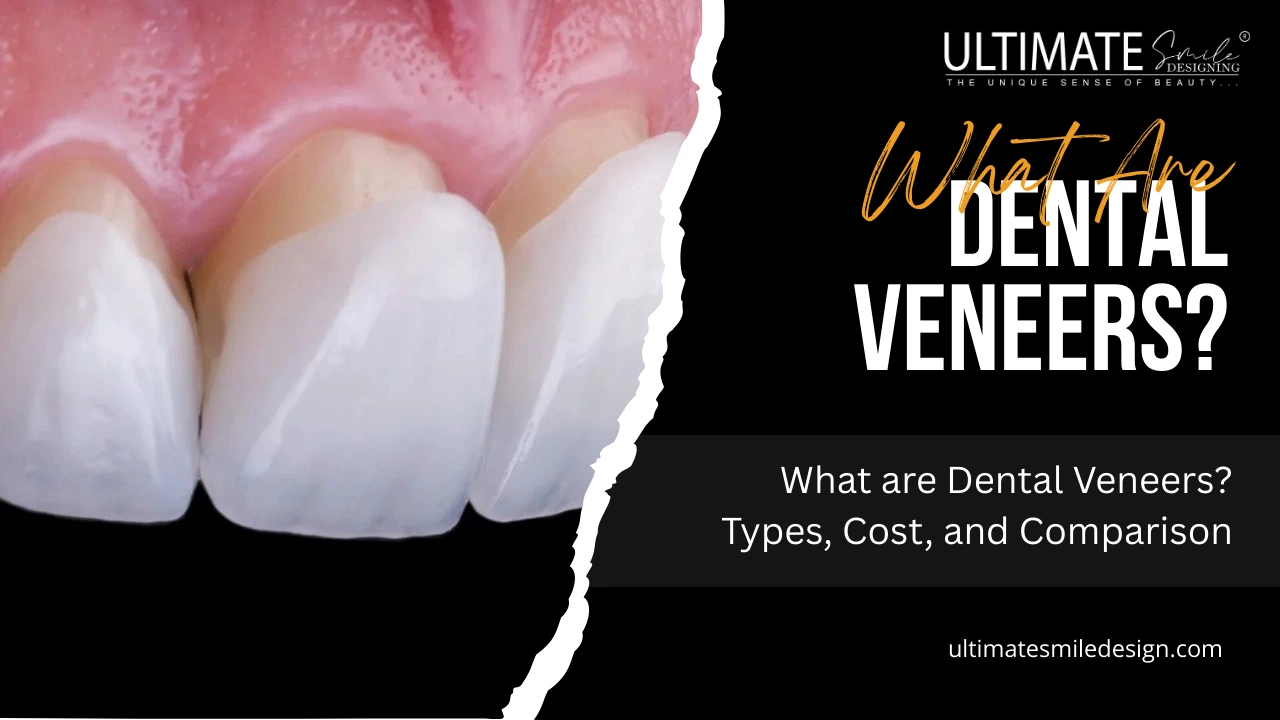
Swiping through last year's photos and lingering over a smile that looks… outdated. The line isn't as sharp, the proportion skewed, and then you notice dental technology has made leaps while your smile remained constant.
Advances in digital smile design are redefining how long-term dental work is done.
In 2025, virtual simulations, AI-driven design, and ultra-accurate milling mean your new bridge won't merely fill a gap; it'll seat itself into place with custom-fit margins, perfect contours, and materials designed to last.
Virtual Smile Simulations Steal the Show
Pretending to see your smile in the future before any treatment has even started, plotting shape, shade, and alignment in glorious detail on screen.
Virtual simulations close the gap between anticipation and actuality, offering a glimpse that is near-magical.
AI-Powered Diagnostic Tools
- Fast facial analysis:Intelligent software combines 3D scans with images of your smile line and lip shape, recommending perfect tooth shapes that suit your face.
- Customised outcome predictions:Machine-learning algorithms apply thousands of previous cases to predict what different designs will look and perform like, so you make selections with certainty, not uncertainty.
Interactive Digital Mock-Ups
- Live smile trials: Swipe through before and after perspectives, adjusting tooth length or color until it's just right.
- Hands-on patient feedback: Touchscreen interfaces allow you to drag and drop design components, turning your imagination into reality in seconds, not weeks.
- Fewer surprises: When you get to actual veneers or aligners, what you see is what you get in your mouth.
Thanks to these virtual previews, smile design is truly a collaborative process, no more "what if." Now, you go into treatment knowing exactly how your new smile will fit.
Minimally Invasive Methods Gain Momentum
Today's smile makeovers are more like subtle improvements than drastic changes, thanks to innovations that retain natural teeth and accelerate healing.
Ultra-Thin Veneers
- Feather-light touch: Thinner than a contact lens, these veneers need almost no enamel removal. Picture improving your smile without the "drill" tension.
- Natural translucency: Their thin shape allows light to pass through exactly like natural teeth, so your new smile appears new, not "veneered."
- Quick customization: Digital designs ensure the shape and shade fit your face perfectly, then milling machines craft them in one to two visits.
Laser-Guided Gum Reshaping
- Precision tissue sculpting: Soft-tissue lasers trim and contour gum lines with surgical accuracy, think of it as a spa treatment for your smile.
- Minimal bleeding, maximum comfort: The laser seals as it cuts, reducing discomfort and slashing healing time. You’ll be back to normal in hours, not days.
- Balanced smile frame: Even a minor gum change can revolutionize your smile, controlling how much tooth you expose when smiling, perfectly framing your new restorations.
These methods show how the smile design trends of 2025 are all about preserving what you already possess, while still delivering that confidence boost you so desire, with less muss and more speed.
AI-Driven Treatment Planning
Treatment plans today are less like intelligent guesses and more like customized maps, thanks to clever algorithms that look ahead to what your mouth requires before a drill is even activated.
Forecasting Force Analysis
- Insights from bite mapping: Algorithms examine your chewing habits and identify where stress is focused, so connectors and pontics are strengthened precisely where they must be.
- Early problem detection: Possible high-pressure areas appear on the computer model, allowing the team to adjust designs so that they avoid cracks or discomfort in the future.
- Customized toughness: Your bridge isn't made to generic specifications; your dentist engineers it to how you chew, so that it can withstand your favorite foods and routines.
Automatic Margin Detection
- Accurate fit every time: AI scans pick up on minute inconsistencies at the margin of the restoration, dictating adjustments that seal against bacteria with surgical exactness.
- Less back-and-forth chair-side tweaking: If margins come to you already fine-tuned by the software, you avoid the to-and-fro grinding and polishing, so fatigue and sensitivity remain low.
- Consistent results: All cases are treated to the same stringent checks, so your crown and bridge stand up to the quality standards of the best labs in the world.
With these artificially intelligent technologies, treatment planning is now a collaborative, data-driven process, a bridge that not only fits magnificently but also functions wonderfully for years to come.
Advances in 3D Printing Materials
As 3D printers improve, the materials they print with are changing what's possible, blending strength, biocompatibility, and natural beauty in ways that make long-span restorations more dependable than ever.
High-Strength Biocompatible Resins
- Dentistry-grade durability: New resins are resistant to cracks and wear, tolerating daily forces just like traditional ceramics, so printed frameworks remain strong under pressure.
- Gum-friendly chemistry: Designed to be low-irritating, these resins bond effortlessly with soft tissues, minimizing inflammation around pontics.
- Speed and flexibility: Rapid-cure formulas enable labs to create prototypes and final bridges in hours, not days, ideal for same-day try-ins and quick adjustments.
Next-Gen Ceramic Hybrid Blocks
- Ceramic–composite blend: By combining ceramic particles into a composite matrix, these blocks provide ceramics' fracture strength with polymers' shock-absorption properties.
- Effortless milling and printing: Hybrid blocks mill cleanly without chipping, while printed forms layer smoothly, enabling technicians to have more liberty to create complex connectors and pontic forms.
- Natural light plays: Next-generation formulas capture enamel's translucency and depth, so printed restorations are indistinguishable from your teeth even under scrutiny.
These advances in materials ensure 3D-printed long-span bridges aren't compromises; they're next-generation restorations engineered to withstand real-world conditions.
Tele-Dentistry and Remote Care
Tele-dentistry delivers the clinic to your living room, combining convenience with expert guidance for a fully contemporary smile experience.
At-Home Smile Assessments
- Snap-and-send scans: Easy smartphone photos or compact desktop scanners take a picture of your smile or particular trouble areas and send it directly to your dentist.
- Guided self-evaluations: Video consultations allow your provider to guide you through bite checks and gum examinations, highlighting areas that require in-office follow-up.
- Immediate feedback: Rather than wait days, you receive customized guidance in hours, whether it's an adjustment to a virtual mock-up or a rapid chair-side adjustment.
Cloud-Based Treatment Modifications
- Live design modifications: Your dental laboratory and dentist can make digital models adjustments remotely, changing pontic shapes or connector sizes without an additional visit.
- Effortless file sharing: Amended scans, treatment planning, and even 3D printing settings synchronize in the cloud, so every team member is always working with updated information.
- Rapid turnaround: By eliminating courier delays and repeat appointments, restorations are faster, and your new bridge is slotted in with less lost time.
By embracing tele-dentistry, there are fewer trips to the office, quicker issue-solving, and a more flexible process that works around your schedule, wherever you are.
Sustainability in Digital Dentistry
While comparing the latest smile design vs traditional cosmetic dentistry, there is a lot of advancement in smile design. With growing eco-awareness, digital workflows are greening, reducing waste and energy without compromising accuracy.
- Reusable scan accessories: Single-use plastics give way to silicone sleeves and autoclavable tips, which eliminate disposables with each digital impression.
- Energy-efficient milling units: More recent CAM machines shut off idle modules and improve cutting paths, reducing electricity consumption during fabrication.
- Reduced material waste: Accurate digital nesting packs several restorations onto a single blank, reducing off-cuts and scrap.
These measures reduce dentistry's carbon footprint without sacrificing fitness and finish.
Improved Patient Experience
Incorporating next-gen tech into dentistry isn't only about accuracy; it's about treating you with care at every turn.
- Augmented Reality Smile Trials: Experiment with various styles in real-time, viewing your new smile from all sides before moving forward.
- Real-Time Treatment Dashboards: Monitor progress online as your case progresses through scanning, design, and fabrication, no surprises when your new bridge is ready.
- Instant Feedback Loops: Snap a photo or jump on a fast video call to resolve concerns in the moment, eliminating unnecessary trips and wait times.
These tools enable you to remain in command, educated, and assured, transforming what previously felt like a dental venture into an effortless, open process.
Ready to raise the bar? Schedule your digital consultation today and discover how effortless your smile process can be.
Embrace Tomorrow's Smile Today
The revolutionary trends of 2025, from AI-assisted planning and nanometric veneers to tele-dentistry consultations and sustainable workflows, are transforming the way smiles are born.
Your perfect smile isn't a far-off concept; it's waiting to be mapped, milled, and fitted with precision.
Experience the future of smile design yet?
Schedule your virtual consultation today and take the first step towards a smile as forward-thinking as you are.
Related Blogs
Categories
Tag
- smile design dentistry
- smile design dental
- digital dentistry
- Smile design trends 2025
- AI in smile dentistry
- Virtual smile simulation


